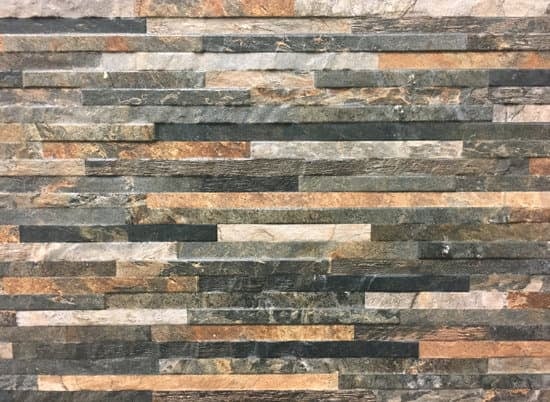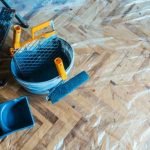Are you wondering how to claim home improvements on taxes? Making upgrades and renovations to your home not only enhance its value and comfort but can also provide tax benefits. Understanding the tax implications of home improvements can help you maximize your deductions and save money in the long run.
When it comes to claiming home improvements on taxes, it’s essential to know what qualifies for a deduction and what doesn’t. From gathering necessary documentation to calculating the tax deduction, there are several important steps to take when reporting home improvements on your tax return. In this article, we’ll guide you through the process, providing valuable tips for maximizing your home improvement tax deduction and avoiding common mistakes.
Whether you’ve recently renovated your kitchen, installed energy-efficient windows, or made other improvements to your property, knowing how to claim these expenses on your taxes can result in significant savings. From understanding the difference between repairs and improvements for tax purposes to reporting them on Form 1040 Schedule A, we’ll cover everything you need to know about claiming home improvements on taxes.
Qualifying Home Improvements
When it comes to claiming home improvements on your taxes, it’s important to understand what can and can’t be claimed in order to maximize your tax benefits. Generally speaking, home improvements that add value to your home or prolong its useful life can be claimed for tax purposes.
This includes renovations such as adding a new bathroom, kitchen upgrades, installing a new roof, or adding a deck. On the other hand, repairs and maintenance expenses are typically not eligible for tax deductions.
It’s also important to note that improvements made for medical reasons may also qualify for tax deductions. For example, if you install entrance or exit ramps for your home because of a medical condition, these modifications may be eligible for a tax deduction. Additionally, energy-efficient upgrades such as solar panels or geothermal heat pumps may also qualify for certain tax credits.
On the other hand, general repairs and maintenance costs such as fixing a leaky faucet or painting the walls are not considered eligible for tax deductions. It’s essential to keep thorough records of all home improvement expenses in order to accurately claim them on your taxes.
| Improvements That CAN Be Claimed | Improvements That CANNOT Be Claimed |
|---|---|
| Renovations that add value to the home (e.g. new bathroom) | Repairs and maintenance expenses (e.g. fixing a leaky faucet) |
| Energy-efficient upgrades (e.g. solar panels) | General repairs not meant for improvement purposes (e.g. painting the walls) |
Gathering Necessary Documentation
Importance of Documentation
When it comes to claiming home improvements on taxes, documentation is crucial. Without the proper receipts, invoices, and contracts, you may not be able to substantiate your claims in the event of an audit. The Internal Revenue Service (IRS) requires that you provide proof of your expenses when claiming deductions, so it’s essential to keep detailed records.
What Documentation to Gather
In order to claim home improvements on your taxes, you will need to gather all relevant receipts, invoices, and contracts related to the work done. This includes materials purchased for the improvement, labor costs, and contractor fees. Make sure that each document clearly states what was done, when it was done, and how much it cost.
Organizing Your Documentation
To make things easier when it comes time to file your taxes, it’s important to keep all of your home improvement documentation organized. Consider creating a folder specifically for these documents and keeping it in a safe place where you can easily access it when needed. It’s also a good idea to make digital copies of everything as a backup in case the physical copies are lost or damaged.
Understanding the Difference Between Repairs and Improvements for Tax Purposes
When it comes to claiming home improvements on your taxes, it’s important to understand the difference between repairs and improvements for tax purposes. This distinction is crucial because only certain home improvements are eligible for tax deductions. Here are some examples of qualifying home improvements that can be claimed on your taxes:
- Adding a new room or converting an existing space into a bedroom
- Installing a new heating or air conditioning system
- Upgrading the electrical wiring or plumbing in your home
- Adding a security system or storm windows
On the other hand, regular repairs and maintenance expenses do not qualify for tax deductions. These include activities such as fixing a leaky faucet, painting a room, or replacing broken window glass. It’s essential to keep this in mind when gathering documentation for your tax deduction claims.
In order to claim home improvements on your taxes, you will need to provide the necessary documentation to support your claims. This includes keeping track of receipts, invoices, and contracts related to the home improvement projects. The IRS may request these documents as proof of the expenses incurred, so it’s important to keep thorough records of all relevant transactions.
Calculating the Tax Deduction for Home Improvements
When it comes to claiming home improvements on your taxes, it is essential to understand how to calculate the tax deduction for these expenses. This deduction can help offset the costs of making upgrades and renovations to your home, making it a valuable benefit for homeowners. Here are some key points to consider when calculating the tax deduction for home improvements:
- Cost Basis: The cost basis of your home is the starting point for calculating the tax deduction for home improvements. This includes the original purchase price of your home plus any qualifying expenses such as closing costs and legal fees.
- Qualified Expenses: Only certain home improvements qualify for a tax deduction. These include expenses that add value to the property, prolong its useful life, or adapt it to new uses. Examples of qualifying improvements may include adding a new roof, installing energy-efficient windows, or remodeling a kitchen or bathroom.
- Deductible Amount: The deductible amount for home improvements is based on the increase in your home’s fair market value as a result of the improvements. This can be determined by obtaining a professional appraisal or using other acceptable valuation methods.
It’s important to keep in mind that not all home improvement expenses will result in a tax deduction, so it’s crucial to consult with a tax professional or refer to IRS guidelines to ensure accuracy when calculating this deduction.
Overall, understanding how to calculate the tax deduction for home improvements can help homeowners maximize their potential tax benefits and make informed decisions when investing in their properties. By keeping track of qualified expenses and determining the deductible amount accurately, homeowners can take full advantage of this valuable tax incentive while improving their living spaces.
Reporting Home Improvements on Your Tax Return
When it comes time to file your taxes, it’s important to report any home improvements you’ve made in order to potentially benefit from tax deductions. One way to do this is by using Form 1040 Schedule A, which allows you to itemize your deductions, including those related to home improvements.
Understanding Form 1040 Schedule A
Form 1040 Schedule A is used to report itemized deductions that can include things like medical expenses, charitable donations, and yes, home improvements. When reporting home improvements on this form, it’s important to ensure that the improvements meet the criteria set forth by the Internal Revenue Service (IRS) for claiming a tax deduction.
Required Documentation
When filling out Form 1040 Schedule A with your home improvement deductions, you will need to gather all necessary documentation, including receipts, invoices, and contracts related to the improvements. This documentation will serve as evidence when claiming the deduction and can help support your case should the IRS request verification of the expenses claimed.
It’s crucial to keep thorough records of all expenditures related to the home improvements throughout the year so that you have everything you need come tax time.
Important Tips for Maximizing Your Home Improvement Tax Deduction
When it comes to maximizing your home improvement tax deduction, there are several important tips to keep in mind. One of the most crucial tips is to ensure that you keep detailed records of all your home improvement expenses. This includes receipts, invoices, and contracts for the work done. Without this documentation, you may not be able to claim the deduction or might face challenges if audited by the IRS.
Another key tip is to understand the difference between repairs and improvements for tax purposes. While repairs are expenses that simply maintain a property’s existing condition, improvements are investments that increase the value of the property. Only home improvements can be claimed as a tax deduction, so it’s important to accurately distinguish between the two.
In addition, it’s important to remember that not all home improvements qualify for a tax deduction. To maximize your deduction, focus on energy-efficient upgrades like solar panels, geothermal heat pumps, and energy-efficient windows and doors. These upgrades not only improve your home but also provide significant tax benefits.
| Expense Category | Maximum Tax Deduction |
|---|---|
| Energy-Efficient Upgrades (e.g. Solar Panels) | 30% of total cost (including installation) |
| Making Home Accessible for Disabled Individuals | $15,000 |
| Residential Energy Property Credit (e.g. Geothermal Heat Pump) | Up to $300 per system |
Common Mistakes to Avoid When Claiming Home Improvements on Taxes
When claiming home improvements on taxes, it’s important to be aware of common mistakes that could potentially lead to complications with the IRS. One of the most common mistakes to avoid is improperly categorizing repairs as improvements. It’s essential to understand the difference for tax purposes, as only home improvements are eligible for tax deductions. Repairs, on the other hand, cannot be claimed on your taxes.
Another mistake to avoid when claiming home improvements on taxes is failing to gather and keep all necessary documentation. Receipts, invoices, and contracts serve as evidence of the expenses related to the home improvements and are crucial for substantiating your tax deduction claims. Without proper documentation, you may encounter challenges in justifying your claims in case of an audit.
In addition, some homeowners make the mistake of overestimating their home improvement tax deduction. It’s important to accurately calculate the deductible amount based on the specific guidelines provided by the IRS. Overestimating your deduction could raise red flags with the IRS and potentially result in penalties or additional taxes owed. Therefore, it’s crucial to carefully follow IRS regulations and seek professional guidance if needed to ensure accurate calculations when claiming home improvements on taxes.
Conclusion
In conclusion, claiming home improvements on taxes can be a valuable way to recoup some of the costs associated with making your home more comfortable and energy-efficient. By taking advantage of tax benefits for home improvements, you not only save money in the short term but also add value to your property in the long run.
It is important to remember that not all home improvements qualify for tax deductions, so it’s crucial to understand the difference between repairs and improvements for tax purposes. Keeping detailed documentation such as receipts, invoices, and contracts will also help support your claims in case of an audit.
While maximizing your home improvement tax deduction can be beneficial, it’s essential to avoid common mistakes such as overestimating the value of the improvements or claiming ineligible expenses. Consulting with a tax professional can provide valuable guidance in ensuring that you are following all the rules and regulations when claiming home improvements on your taxes. Ultimately, by being diligent and informed about the process, homeowners can make the most of the tax benefits available for their home improvements.
Frequently Asked Questions
Can You Write Off Home Improvements on Your Taxes?
Generally, you cannot write off home improvements on your taxes. Home improvements are considered personal expenses and are not tax-deductible. However, if the home improvement qualifies as a medical expense or is made for energy efficiency purposes, you may be eligible for a tax deduction.
Can You Write Off New Flooring on Your Taxes?
In most cases, you cannot write off new flooring on your taxes. Similar to home improvements, new flooring is typically considered a personal expense and not tax-deductible. However, if the flooring is installed for medical reasons or energy efficiency purposes, you may be able to claim a tax deduction.
Can You Write Off Kitchen Remodel Your Taxes?
When it comes to kitchen remodels, they are usually not tax-deductible as they are considered personal expenses. However, if certain aspects of the remodel improve the home’s energy efficiency or are necessary for medical reasons, you may be able to claim a tax deduction for those specific items.
It’s important to keep detailed records and consult with a tax professional to determine eligibility for any potential deductions related to kitchen remodels or renovations.

I’m thrilled to have you here as a part of the Remodeling Top community. This is where my journey as an architect and remodeling enthusiast intersects with your passion for transforming houses into dream homes.





